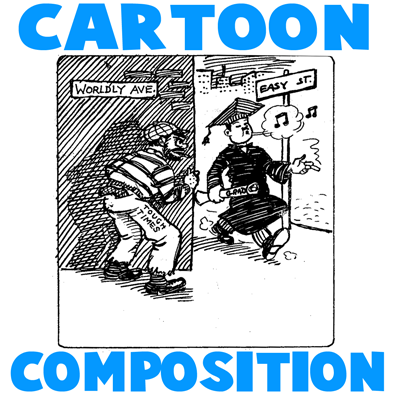


Check out our versatile Graphic Novel Templates! Remember, when giving your students an assignment in Storyboard That, you can add as many templates as you like to differentiate and provide student choice! But, never fear! We have many graphic novel organizers to choose from in our templates collection.
#SIMPLE COMIC LAYOUT COMPOSITION HOW TO#
How to storyboard a graphic novel can be daunting. Many popular novels have been turned into graphic novels to meet a broader audience and introduce students of all abilities to classic works of literature. The storyboard graphic novels below are just a few examples of what students can create!Ī graphic novel project is the perfect way for students to use their imaginations and write their own stories, summarize the plot of a graphic novel that they have read or to have students transfer their knowledge of another piece of literature into graphic novel form. This graphic novel version adapted by Fred Fordham and Aya Mortonmakes allows this complex work to become accessible to all students. Is a classic novel that has been taught in high school classrooms for decades. New Kid is popular for grades 3-6 while White Bird is often used in grades 4-7. Palacio, are examples of moving and thought provoking graphic novels taught at all levels. New Kid by Jerry Craft and White Bird by R.J. Not only is teaching graphic novels fun, but it is also the perfect way to raise student interest and student motivation, encourage independent reading, and boost your classroom ideas for new activities and lessons. Graphic literature captures student interest, and help make complicated ideas seem less intimidating. They engage students, and help students develop confidence in their reading skills. Graphic novels help struggling readers grasp the story as a form of visual literacy. Social media, advertising, marketing, television, film, construction, engineering, and many more industries use imagery as a crucial part of their business. It only makes sense to incorporate graphic novel projects into your curriculum in order to engage students, and help them develop their critical thinking skills in reading and writing! Written skills are vital for college and the workplace, but images are as well. Most students (and teachers for that matter) are visual learners. As students get older, they are given fewer and fewer opportunities to create illustrated stories, despite the fact that we live in a very visual world. In the earliest grades, when students are still learning letters and building vocabulary, they are encouraged to draw during "Writer's Workshop". Both include detailed character descriptions and narrative arcs that are depicted in visuals as well as words. Although the terms are often used interchangeably, graphic novels are generally more complex, stand-alone stories while comic books evoke the superhero genre. They can be in the form of fiction, non-fiction, history, fantasy the sky's the limit! They use both illustrations and words in sequence to tell a story. "Graphic novel" really just means "long picture story" or "a novel in comic-strip format" and are often of the highest literary quality!Ĭomic books or graphic novels are a type of format for literature, not a genre. However, graphic novels are still sometimes given a bad rap because they make people think of poorly written comic books - rather than great literary works. More and more teachers are encouraging their students to read graphic novels as part of their standard ELA curriculum. Students will love using the Storyboard Creator to make a comic book or graphic novel for their school project. Whether you want to introduce how to write graphic novels for students, or you want to have students transfer their knowledge of another piece of literature into graphic novel form, Storyboard That can help you create the perfect graphic novel assignment.

For this reason, many teachers incorporate graphic novels in their lesson plans! However, teachers of students with a range of reading abilities do not have to sacrifice rich literary content. Teachers expose students to high quality literature with good stories and complex characters to enrich their reading and enhance their writing. Every creative writing program includes a variety of ways for students to take their ideas and transform them onto the page.


 0 kommentar(er)
0 kommentar(er)
